Some bugs have short legs while others have long legs that are even longer than the body.
Most bugs with long legs found indoors tend to put people off. These bugs can have legs a few times longer than their bodies.
Some bugs with long legs also have wings. Large bugs with long legs may sometimes struggle to fly long distances.
Many of the bugs that have long legs are harmless to humans but efficient predators and deadly to small insects.
A good percentage of bugs with long legs are slow. Despite their long legs, they cannot move at high speed which means insectivores can only eat slow-moving insects.
As a result, many long-legged bugs are found in areas with aphids or other bugs that cannot make a quick escape.
Some of the most common species can be categorized as follows.
Table of Contents
1. Cellar Spiders
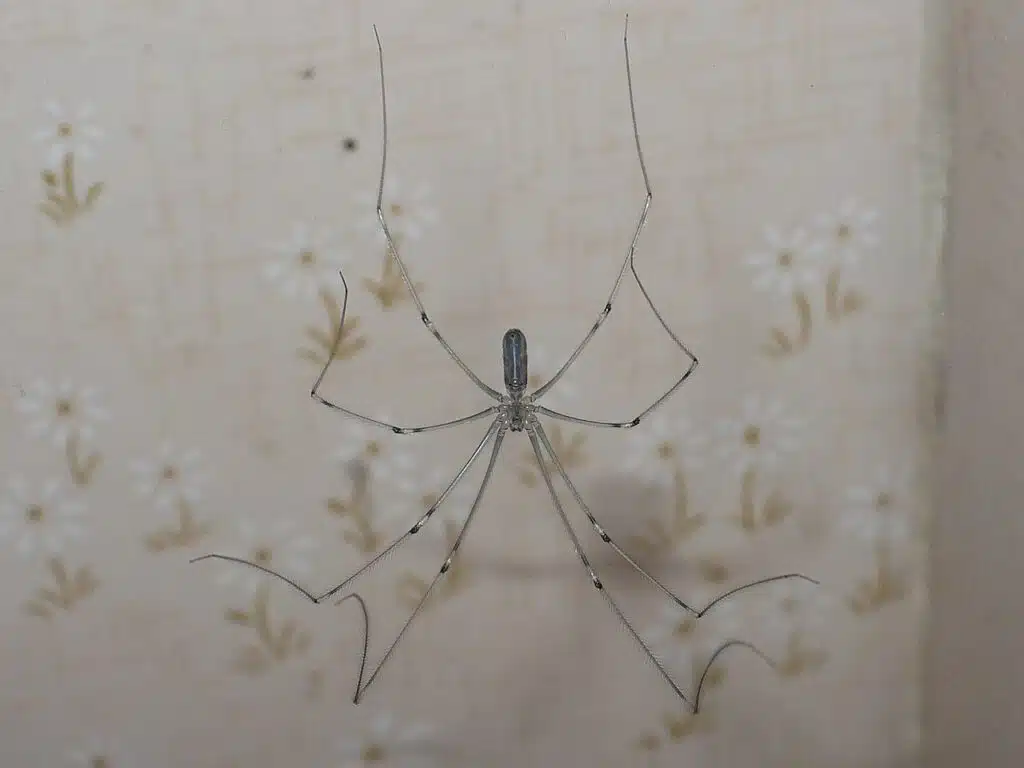
Cellar spiders are known for having very long legs. These spiders are even sometimes confused with the more prevalent Daddy longlegs spider.
This species is found all around the world on all continents except Antarctica.
The legs of the Cellar spider are very long. They measure 4 times more than the body of the spider.
Cellar spiders have a diverse diet based on trapping insects in their large spider webs.
Even other spiders fall prey to Cellar spiders, especially if smaller.
Often found in caves and other damp cool places such as basements, Cellar spiders are a nuisance pest for humans and a considerable threat to insects and other common spiders.
The Common House spider is often eaten by the Cellar spider.
Other species of spiders found either indoors or outdoors can also fall prey to Cellar spiders. These long-legged spiders go on to the spider web of other species which they vibrate to lure them out thinking insects are caught up on the web.
This technique leads to one of the nicknames for Vibrating spiders Cellar spiders are known for.
2. Harvestmen
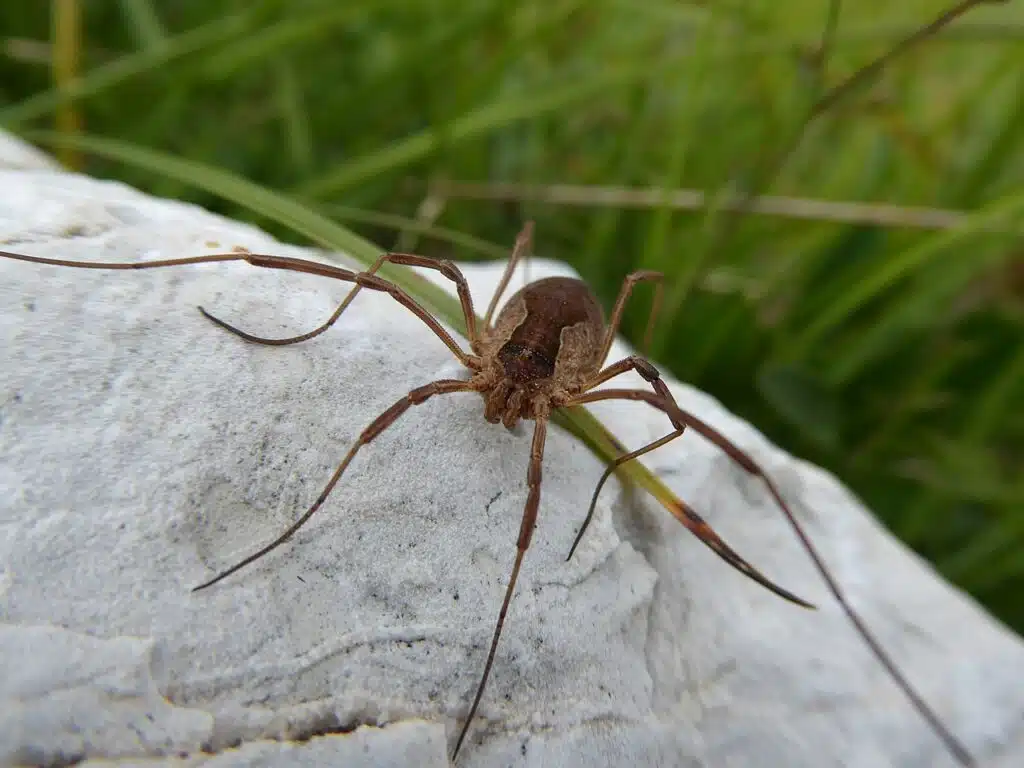
Harvestmen are light brown arachnids also known as Daddy longlegs. There are multiple spiders known as Daddy longlegs and all of these species are known for having long legs about their body size.
These arachnids live all around the world. They have a widespread presence but are rarely seen by humans as they’re nocturnal.
Harvestmen are omnivores. Their diet is complex and it involves eating both living and dead insects and even meat.
Harvestmen regularly consume carrion by ingesting small amounts of solid carrion instead of sucking on food as spiders.
Harvestmen don’t have a silk-producing gland and feeding is predicated on moving around for living or dead food.
These arachnids don’t bite people. While they can make their way indoors, they rarely do as they prefer to look for dead insects, carrion, and dung outside.
Reproduction is also complex for the species. It can take up to 6 months for an egg to turn into an adult Harvestmen.
Unlike spiders, the male and the female Harvestmen mate directly. The role of the male is unimportant in some Harvestmen sub-species as the females can lay fertilized eggs without mating.
These eggs are never left unguarded as both males and females can take turns caring for the eggs.
It can take months (in cold weather) for the fertilized egg to go through all of its 6 molts and turn into an adult Harvestmen.
3. Crane Flies – Flying Bug With Long Legs
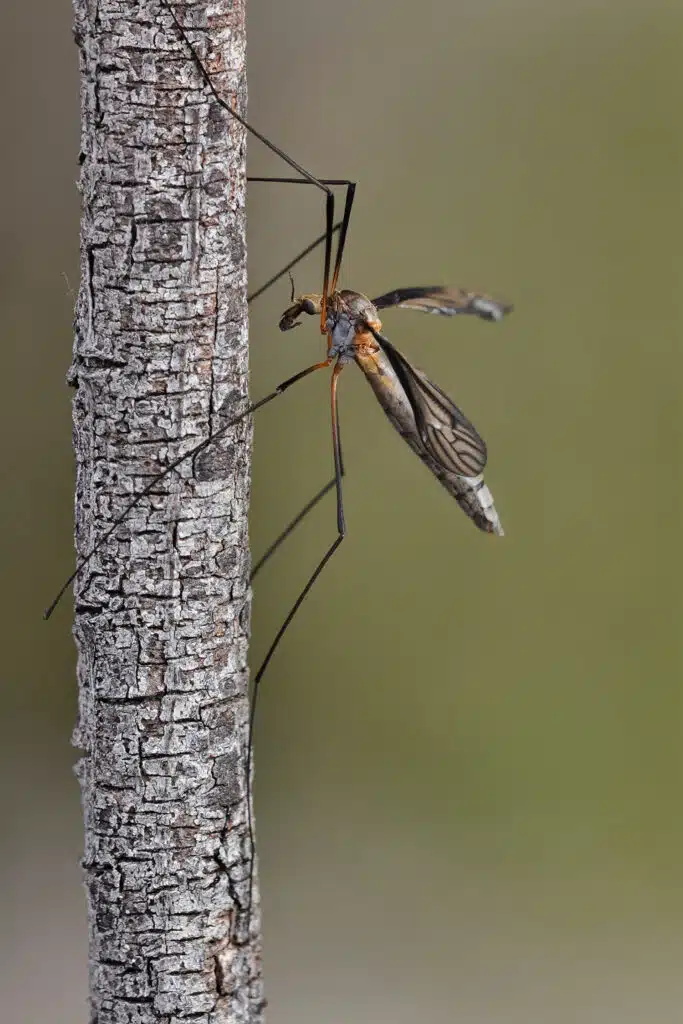
Crane flies are a type of True fly with some resemblance to mosquitoes but without painful bite risk.
These flies have slender long legs and colorful bodies. Thousands of species of Crane flies exist around the world and most of them aren’t known to bite.
Flies of this genus are known as pests on various crops such as cereal crops.
Crane flies are common on many vegetable crops as well. The one common factor for the species is high humidity on crops.
One of the areas these flies are present is the lawn since it gets regular watering. Lawns in suburban areas are often invaded by these flies that can eat the roots of various types of grass and cause considerable losses.
Crane fly larvae are also known to eat algae so any flooded area or area with a constant source of water is prone to be a host area for the young of the species.
As mosquitoes that lay eggs in water, Crane flies might also have a similar mating strategy.
However, these flies might also have a mild beneficial role in the ecosystem as they can also consume decaying organic matter.
Decaying plant fibers, decaying grass clippings, and even decaying wood are all part of the extended diet of Crane flies.
4. House Centipedes
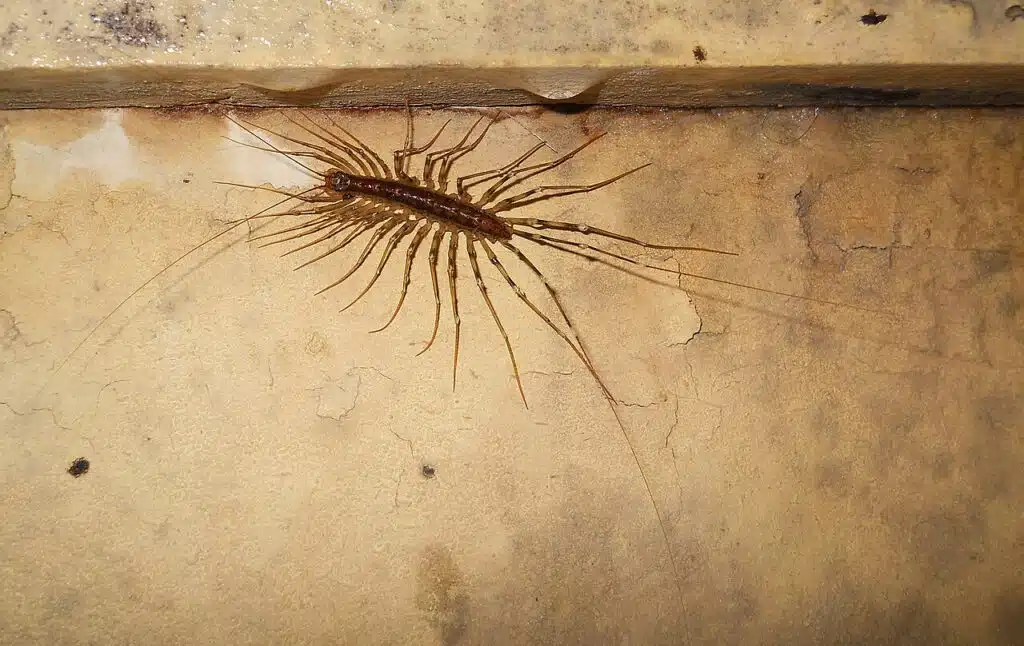
House centipedes are found all around the world. Originally found in the Mediterranean, house centipedes are among the species with multiple long legs.
Up to 15 pairs of legs are seen on House Centipedes all around the body.
The legs of the species play the most important role in feeding and defending.
House Centipedes are among the few house bug pests that groom their legs. The importance of the legs is seen in how the species cleans its legs every day.
Commonly found in basements and other damp places, House Centipedes use their legs to catch one or even multiple smaller insects or spiders at the same time.
These centipedes are also able to shed their legs in certain situations.
While rare, this can still happen when their legs get stuck or bitten by their predators.
Common around homes, these House centipedes may have a mild beneficial role as well.
They eat spiders, ants, and even bed bugs, all major home pests.
In some cases, House centipedes can even pick out a live cockroach to eat which makes them beneficial in pest control.
The species has venom which isn’t dangerous to humans but which is deadly to its prey.
Once the prey is caught up in its legs, the House Centipede bites it injecting its venom and immobilizing its prey.
5. Stilt Bugs

Stilt bugs are a common problem in US tomato greenhouses. These bugs are known pests of tomatoes and many other hairy vegetables. They also live on soybean and tobacco.
These bugs have slender long legs which are so thin their bodies often appear to be floating. Their antennae are also very long.
Slit bugs mainly feed on the fruits of plants but they might also become insectivores at times.
Some Slit bugs live their entire lives simply eating plants. However, Slit bugs that also eat other insects are known to be stronger and live longer lives.
These bugs aren’t very fast regardless of their long legs.
A reduced speed means they can only hope to consume bugs and insects that are also slow.
This is the main reason they eat aphids. A secondary reason is that aphids eat some of the foods Slit bugs also consume.
6. Water Striders
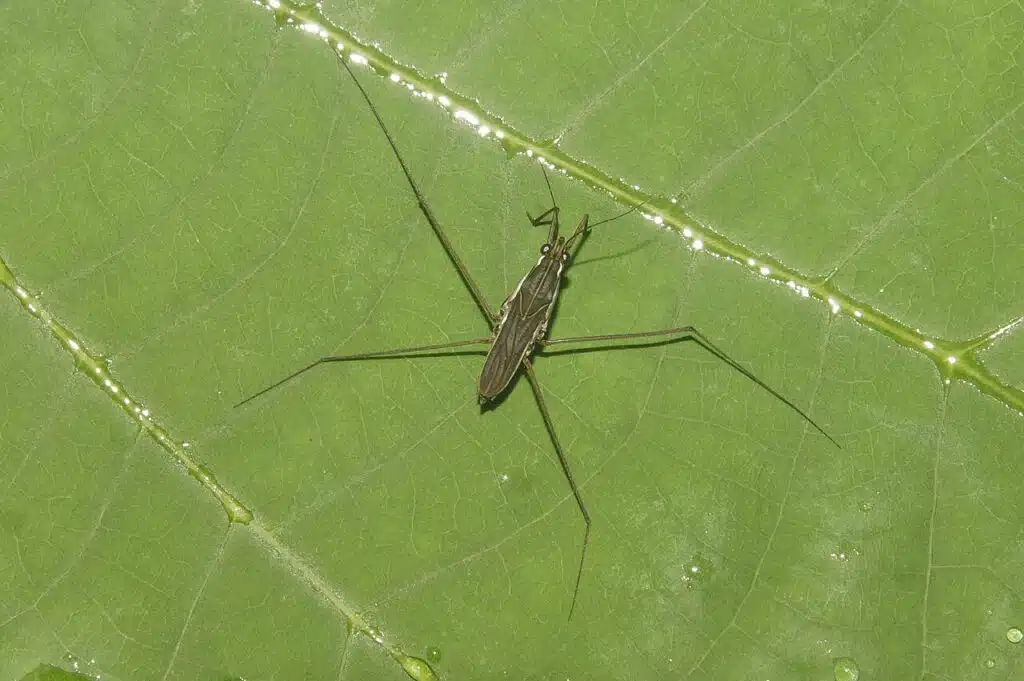
Water Striders are some of the bugs with long legs that are common around the world.
This species gets its name from its capacity to walk on water. Water Striders have multiple thin legs that evenly distribute the weight of the body across each leg so the bugs stay afloat.
Small hairs that repel water are further seen on the legs. The combination of legs that distribute the body weight and hairs that repel water helps the species stay afloat.
Water Striders spend much of their lives on the water. They are known predators looking and waiting for insects and spiders to come across their paths.
Once a spider or insect falls on the water it’s time for Water Striders to move along on the surface of the water to catch them.
7. Long-legged Katydids
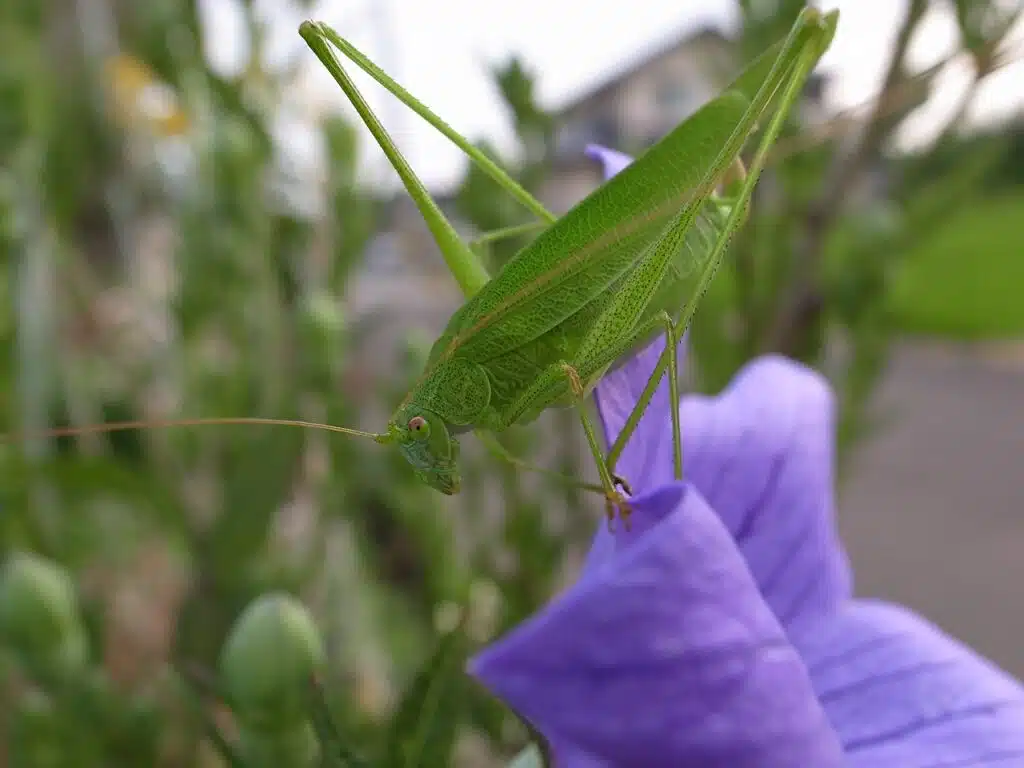
This species is native to Asia and Oceania.
It has long green legs that resemble the legs of grasshoppers. These legs are used for jumping efficiently.
Its legs are thin about the proportions of its body.
These types of katydids are also known as Long-legged grasshoppers, a nickname given to the species for its resemblance to grasshoppers.
These bugs come in a green color that helps them maintain camouflage on the plants they live on.
Males and females are needed for the species to reproduce. Males can produce sounds with their wings which are known as mating-initiation sounds.
8. Long-legged Bush-Crickets
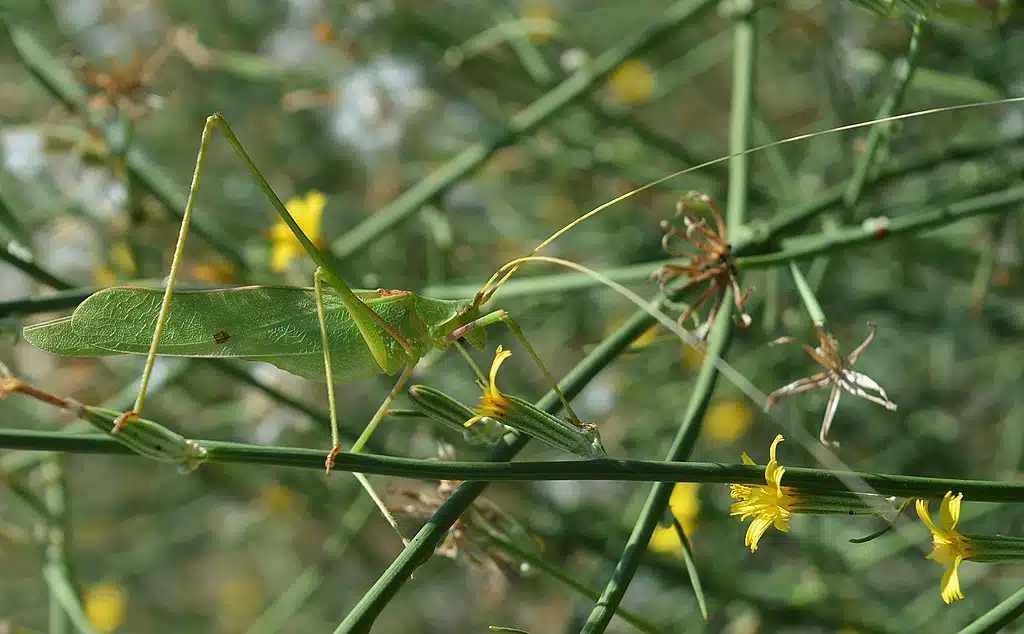
Native to Europe, the Long-legged Bush-Cricket is a green species with thin long legs. Despite its long legs, this species struggles to move fast, just as many other types of bugs with long legs.
Both its legs and its body are green, as is their environment rich in vegetation.
The species has long legs about the length of its body which are green, as is the body.
Bugs of this species have large yellow eyes and faint yellow lines across the sides. These bugs have a varied omnivore diet. They eat various types of grass and leaves but also insects. Aphids are among their favorite slow-moving prey.